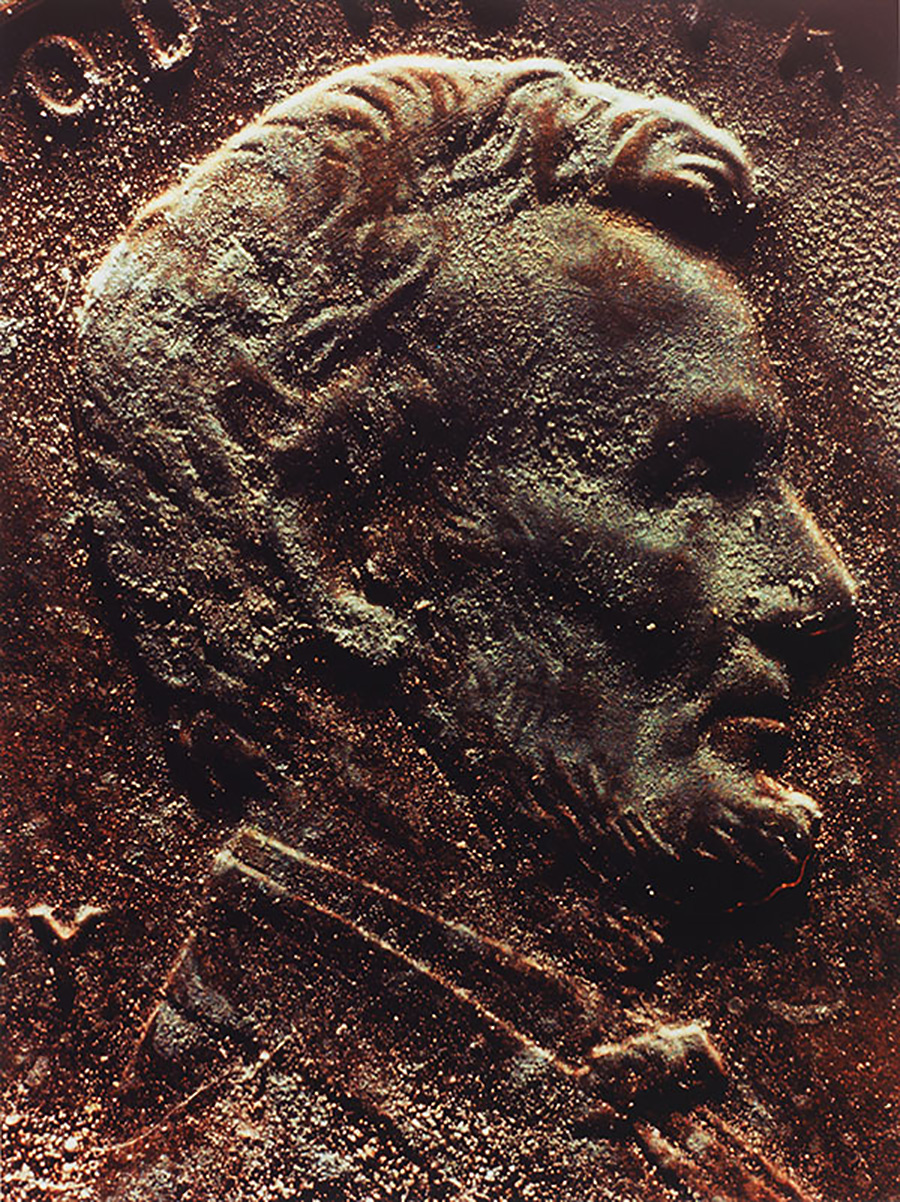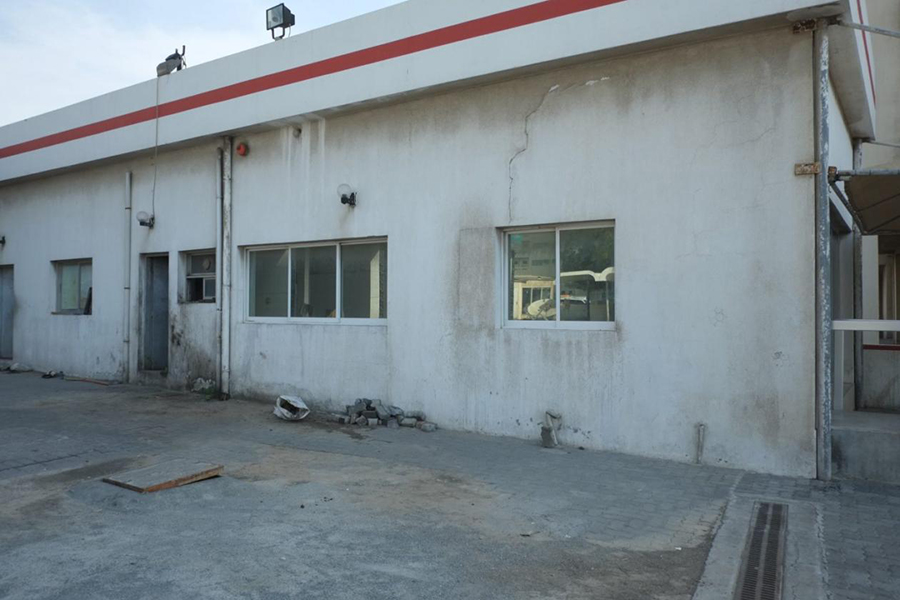Critic’s Guide: Dusseldorf & Cologne
Ahead of this year’s DC Open and gallery share Okey-Dokey, a round-up of the best shows across the Rhineland cities
Ahead of this year’s DC Open and gallery share Okey-Dokey, a round-up of the best shows across the Rhineland cities


Monika Stricker, ‘Stereo Balls’
Clages, Cologne
8 September – 21 October 2017
If there is one body part that’s been given little attention by sculptors to date, it would have to be the male gonads. With her exhibition ‘Stereo Balls’ at Clages, Monika Stricker seeks to remedy this with a crude floor sculpture in raw plaster. Although the form of the work leaves a certain scope for indeterminacy, in combination with the show’s title their identity is pretty clear. The match between the fragile material and the vulnerability of the subject matter is surprising – and surprisingly funny. Especially since Stricker shows an obviously empty scrotum, while the ‘balls’ themselves are to be found elsewhere in the gallery. Between each pair, Stricker has installed a piezo buzzer that uses the plaster forms as resonators for a low-key soundtrack. The more serious (and agreeably undogmatic) comment on sculpture and gender that lies behind this artist’s joke becomes evident when one begins to see these works in a different light: the sculptor’s cliché of a barely abstracted female posterior.

Moyra Davey, ‘Empties’
Galerie Buchholz, Cologne
8 September – 21 October 2017
Moyra Davey is enjoying something of a moment in Europe: featured in both the Athens and Kassel legs of documenta 14 which coincides with exhibitions at Galerie Buchholz in both Berlin and Cologne. Once more, she emerges as one of the few contemporary artists able to develop an artistic cosmos both consistent and flexible. This show includes new versions of her well known (and colourful) series of variously distressed pennies (‘EM Copperheads’) and a selection of 55 black and white photographs, ‘Empties’, reprised from her earlier series ‘Bottles’ first shown at American Fine Arts in 2003. The latter series conveys an immense vulnerability, suggesting drinking as a solution to problems, while the precise compositions offer glimpses of a domestic setting. In a familiar approach, ‘Empties’ is presented with fold marks, remnants of tape, franked stamps and address stickers. Each print was sent to the gallery folded into a letter, putting the old series into circulation and giving it an entirely new look. Now, blue and red stamps explode the grey veil of the pictures, making the drinking appear as something past, something that has been lived through.

Joachim Coucke, ‘Strength in Numbers’
Mélange, Cologne
7 September – 1 October 2017
Three stops on the underground from the city centre leads you to Mélange, Cologne’s most flexible independent space, expanded this time to include the roof of an adjacent building. Here Joachim Coucke is showing plastic baskets repurposed as showcases containing electrical waste that appears to have been thrown together at random. The various gadgets, some of them broken, give off a cool blue to white light that is reflected in transparent plastic masks. The work does what the press release promises, creating a (not especially new) bridge between the fluid worlds of data and their material equivalents. The result has a slightly outmoded feel, like a memory of some 1990s cyber aesthetic, but in turn triggers a far more interesting insight: countless product generations later, little remains of the idealism of the web’s early years with its hunger for change. The crushing force of the resulting IT trash is also underlined by three hanging sculptures made of knotted cables, immediately reminding me of Laocoön’s struggle with the serpents, although in this case a whole horde of snakes has already tightened its stranglehold.

Talia Chetrit, ‘Poser’
Sies & Höke, Dusseldorf
8 September – 8 October 2017
Talia Chetrit’s exhibition in the upper rooms at Sies & Höke is strange and exciting (the basement space has a show by Henning Strassburger). Only three self-portraits, shot as aggressively subversive nudes in a messy studio, are recent works. The remaining photographs were all taken by a teenage Chetrit in the mid-1990s. They show her teenage girlfriends in awkward half- and shoulder-length portraits pulling clichéd poses (one of the girls is sucking on a lollipop) – the pictures show technical errors such as red eye. There is something touching about this precocious amateurism, especially in Girls in Bed, a classic double nude in black and white that gets everything right – except that the women’s roles are played here by girls and the photographic vocabulary is seriously reduced. The three more recent photographs could be seen as reactions to these youthful mistakes in the name of artistic self-discovery. But rather than counteracting the spontaneity and intimacy of the artistic play with her girlfriends, the sterility of the current self-portraits actually emphasizes it.

Mike Nelson, ‘A52’
Capri, Dusseldorf
8 September – 8 October 2017
Traditionally, Germany has been an automotive nation – a self-image that has been shaken up by the VW emission scandal and the push to see the demise of the combustion engine in the coming years. Mike Nelson might not have been thinking of this while setting up his installation ‘A52’ at Capri, a cosy space in Dusseldorf, but the association is obvious. Old car tyres, both whole and in shreds, dangle from the ceiling on threads, found material that points, via the work’s title, to the nearby autobahn A52. Worn down and slack, the material tells the tale of its own fatigue; combined with the dense arrangement, this triggers an oppressive chill that has become something of a trademark for Nelson. All the more so because this time, unlike the version of this work shown (under different titles) in Lyon and Basel, the scene is dominated not by the variance of minimalist forms in the individual fragments, but by what they have in common – the fact of having arrived at their own end. Like Germany’s renowned carmakers, perhaps.

Erik Kessels, ‘Erik Kessels & friends’
NRW-Forum
12 August – 5 November 2017
The notion that the way we relate to photographic images has undergone radical change in the last ten years is of course a platitude. In spite of this, or perhaps because of this, the Dutch artist Erik Kessels engages with analogue photography with a big dose of melancholy, sorting his vast collection of mainly found materials according to curiosities, patterns, or both. ‘In Almost every Picture #7, Shooting Gallery’ (2008), for example, consists of numerous shots of a woman with a rifle, all taken automatically at a fairground shooting gallery – the pictures showing how the woman and her relatives change from year to year. ‘Strangers in My Photoalbum’ (2007), on the other hand, consists of blurred portraits of ordinary people. Kessels discovered them in his own family album, the kind of random extras to be found in their thousands in the background of our photographic family histories. Such approaches often deliver good results, but as the person I was with rightly pointed out, Kessels often stops thinking too soon after hitting on a theme. The show is certainly worth seeing, though, as the man clearly never runs out of ideas for new ones.

Okey-Dokey
Delmes & Zander (Cologne), DREI (Cologne), Galerie Max Mayer (Dusseldorf), Ginerva Gambino (Cologne), Jan Kaps (Cologne), Linden (Dusseldorf), Lucas Hirsch (Dusseldorf), Rob Tufnell (Cologne), Studio for Propositional Cinema (Dusseldorf)
8 September – 30 September 2017
Coinciding with this year’s DC Open is the gallery share Okey-Dokey, for which nine galleries and art spaces in Cologne and Dusseldorf have invited other galleries and artists to put on a show. Okey-Dokey – with a similar model to the ‘collaborative exhibition’ Condo founded last year by Vanessa Carlos (of Carlos Ishikawa gallery) in London and with a recent New York edition – was launched on account of the internationalization of DC Open. Not a bad idea with an eye on the nearby boomtown of Brussels.

As often with gallery shares, the works on show at the various locations are only loosely connected, if at all. A nice solution was found by Jan Kaps (showing Édouard Montassut, Paris, and Weiss Falk, Basel), where Veit Laurent Kurz rebuilt the Rebschänke (Wine Bar) shown by Weiss Falk at Art Basel as a Cologne version he called the Jülichstübli. If one had to highlight one of the works on show here, then it would be Claudia Lemke’s Pale Pattern, a delicately painted grotesque on plywood. At Ginerva Gambino (with Sandy Brown, Berlin, Ermes-Ermes, Vienna, and Truth & Consequences, Geneva), Carl Strathmann’s meticulous gouaches of carpet designs are very striking, not least because a German art nouveau ‘Jugendstil’ artist is the last thing one would expect in this context.

On the other bank of the Rhine, it is worth visiting gallery Lucas Hirsch (with Stereo and Lomex), if only for Piotr Łakomy’s preposterous sculpture Untitled, a cross between a beehive and a fencing mask containing a whole pile of quail’s eggs. Another surprise is Fergus Feehily at Max Mayer (with Arcadia Missa, London, Miguel Abreu Gallery, New York, and Misako & Rosen, Tokyo). Not just because the Irish artist known for his sure-handed anti-paintings in small formats presents a mural, but also because Feehily is already represented by a Cologne gallery (Christian Lethert). Which makes it clear that for all its networking and internationalization, Okey–Dokey does not intend to break with the rich tradition of the Rhineland as an art location. As with its title, taken from the legendary gallerist of the region, Konrad Fischer, quite the contrary.
Main image: Erik Kessels, ‘Erik Kessels & friends’, NRW-Forum, 2017, installation view. Courtesy: NRW-Forum; Photograph: B Babic





















